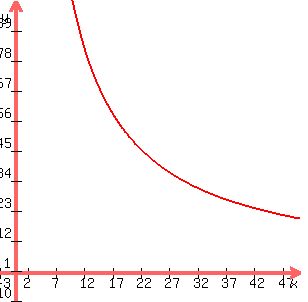Question 1118285: It is a beautiful sunny day at the fair. The U.V. index for this day is 8, or high, so sunscreen is a must for all the young folk. The effectiveness of sunscreen is indicated by the sunscreen protection factor (SPF). The higher the SPF number the fewer U.V. rays can penetrate to burn the skin. When the protection factor (SPF), s, is known you can determine the percent, p, of the sunís ultraviolet rays that pass through it by using the following mathematical model:
[Marks: a: 2; b: 3; c: 3]
P=1000/s
a. What are the asymptotes for this function? Interpret the meaning of the asymptotes based on the scope of the problem.
b. Graph the function.
c. The sunbathers on the beach were using a sunscreen with SPF of 35. What percent of the sunís rays will pass through to skin?
All parts please
Answer by Boreal(15235)   (Show Source): (Show Source):
You can put this solution on YOUR website! 1000/s
as s approaches 0, the function approaches infinity. s=0 is a vertical asymptote. With no sunscreen, infinite sun rays, which means the model breaks down below a certain SPF.
as s approaches infinity, the function approaches 0. P=0 is a horizontal asymptote. A large enough SPF blocks all sun rays.
1000/35=33.3% will pass through.

|
|
|